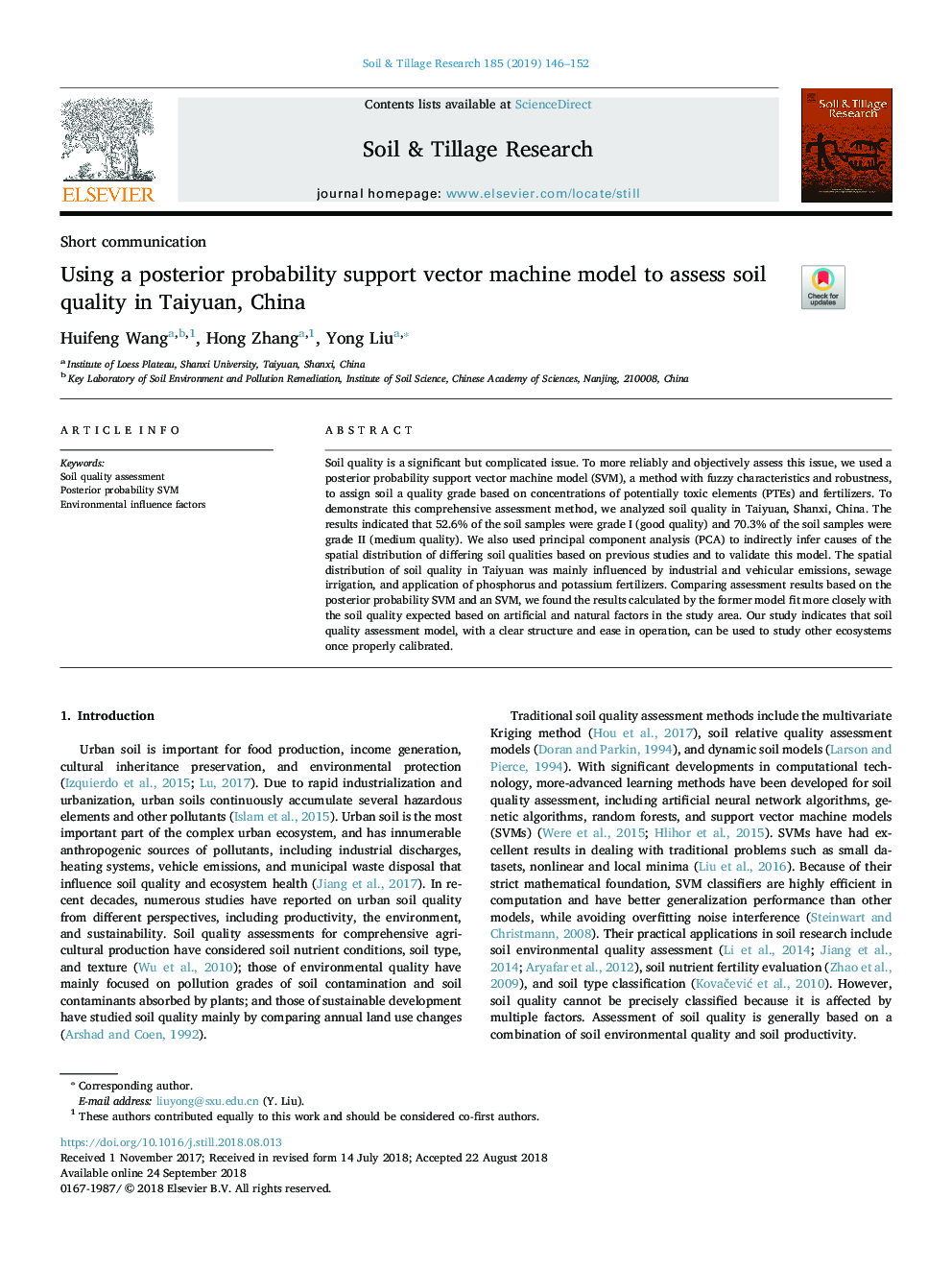| Article ID | Journal | Published Year | Pages | File Type |
|---|---|---|---|---|
| 11031678 | Soil and Tillage Research | 2019 | 7 Pages |
Abstract
Soil quality is a significant but complicated issue. To more reliably and objectively assess this issue, we used a posterior probability support vector machine model (SVM), a method with fuzzy characteristics and robustness, to assign soil a quality grade based on concentrations of potentially toxic elements (PTEs) and fertilizers. To demonstrate this comprehensive assessment method, we analyzed soil quality in Taiyuan, Shanxi, China. The results indicated that 52.6% of the soil samples were grade I (good quality) and 70.3% of the soil samples were grade II (medium quality). We also used principal component analysis (PCA) to indirectly infer causes of the spatial distribution of differing soil qualities based on previous studies and to validate this model. The spatial distribution of soil quality in Taiyuan was mainly influenced by industrial and vehicular emissions, sewage irrigation, and application of phosphorus and potassium fertilizers. Comparing assessment results based on the posterior probability SVM and an SVM, we found the results calculated by the former model fit more closely with the soil quality expected based on artificial and natural factors in the study area. Our study indicates that soil quality assessment model, with a clear structure and ease in operation, can be used to study other ecosystems once properly calibrated.
Keywords
Related Topics
Physical Sciences and Engineering
Energy
Renewable Energy, Sustainability and the Environment
Authors
Huifeng Wang, Hong Zhang, Yong Liu,
